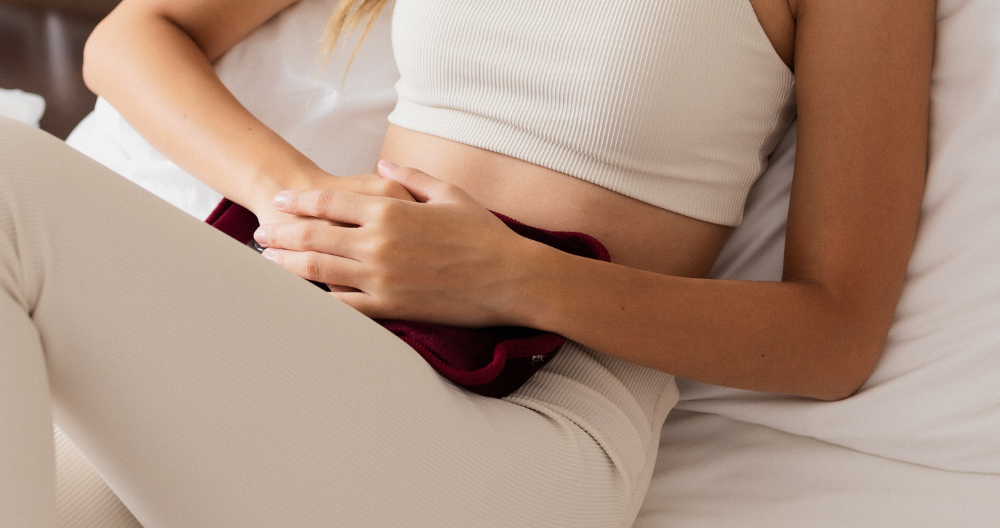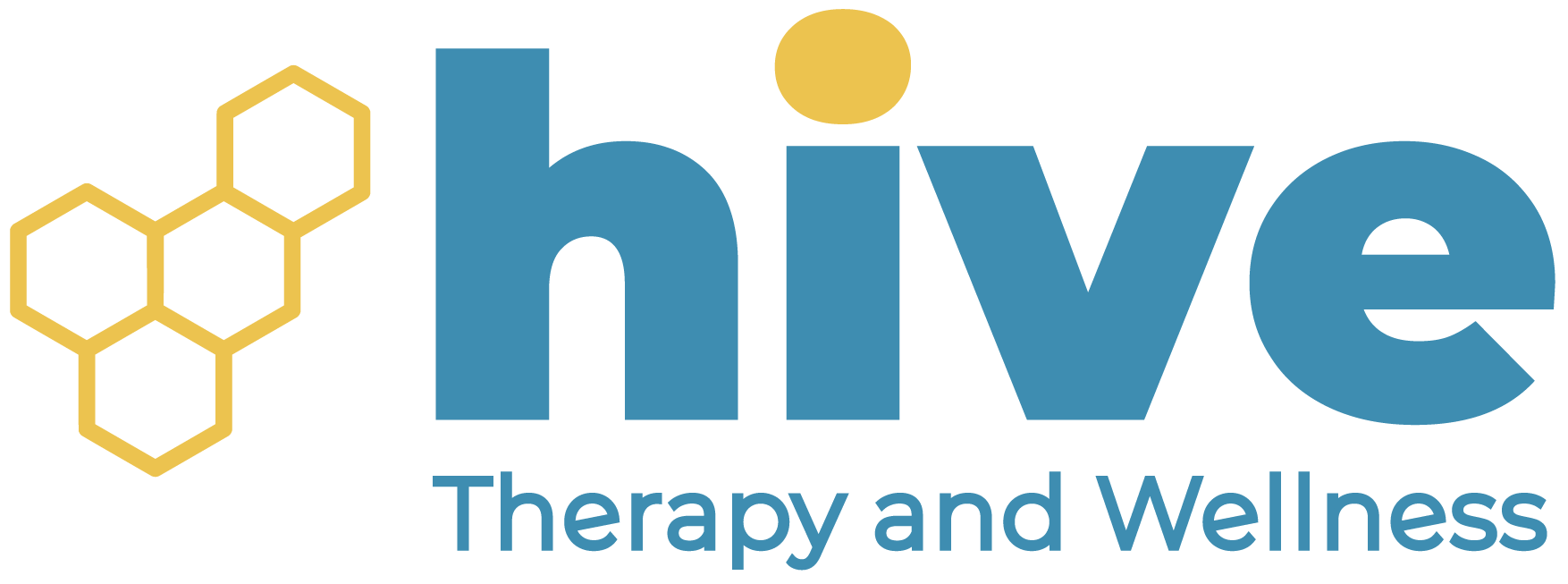Adenomyosis
Move Better. Live Fuller. Your Wellness Journey Starts Here.
Schedule a FREE Discovery Call!
What Is Adenomyosis?
Adenomyosis is a condition of the uterus where the uterine lining, called the endometrium, breaks into the muscle wall of the uterus, called the myometrium. Although they may seem similar, this condition is not the same as endometriosis.
Even as the endometrium lives within the muscle wall, it continues to function as normal, including in terms of menstruation—where this lining will thicken, break down, and bleed.
Because this is occurring in an abnormal location, the uterus can become enlarged and sensitive, resulting in painful side effects such as the following:

- Heavy bleeding during menstruation
- Severe pain during menstruation
- Irregular menstruation
- Chronic pelvic pain
- Painful sex
- Pressure or fullness in the abdomen
- Infertility
Not all people with adenomyosis will have symptoms, although it is common to experience symptoms from this condition. The severity of this condition can vary widely, creating anything from mild to debilitating symptoms depending on the person.
What Causes Adenomyosis?
Unfortunately, the exact cause of adenomyosis is unknown, although there are some factors found through research that may put certain individuals at risk. These possible risk factors for adenomyosis applies to people who:
- Are above the age of 40
- Have experienced childbirth or multiple pregnancies
- Who have had a surgery involving the uterus
There are some theories for the origins of adenomyosis, such as from developmental complications, transferring of endometrial cells during surgery, causes stemming from childbirth, and other suggestions—but none have been solidified.
What is known about adenomyosis is that the growth of this condition depends on the individual’s estrogen levels and hormonal balance. This is because endometrial cells respond to hormones. Therefore, some individuals may find some form of symptom relief with medication that regulates hormones.
Physical Therapy for Adenomyosis
There aren’t many options to completely cure adenomyosis. For some individuals, a hysterectomy (procedure to remove the uterus) can be an option. For those who wish to keep their uterus or who cannot receive a hysterectomy, pelvic floor physical therapy can be a fantastic long-term form of symptom management, in addition to medicinal methods mentioned previously.
So, how does the pelvic floor affect adenomyosis? The pelvic floor is a group of muscles found throughout the pelvis that supports your pelvic organs, including the uterus and other parts of your reproductive system. This incredibly important group of muscles allows for bladder, bowel, and sexual functions. It also supports your body’s stability, balance, and posture—with some added teamwork from your hips, abdomen, lower back, and other pelvic structures.
In other words, the pelvic floor is closely interconnected with your uterus. Unfortunately, that means problems with your uterus can affect the pelvic floor, and vice versa. When there is a problem with your pelvic floor muscles, such as tightness, weakness, imbalance, inflexibility, or incoordination, it is known as pelvic floor dysfunction. This can become a pain generator for adenomyosis, which will exacerbate your symptoms.
Pelvic floor dysfunction can be created by a wide variety of things; one of those things being pelvic muscle tension. Pelvic muscle tension can be built up from the natural reaction your body has when you experience pain (pain guarding), such as the pain you may experience with adenomyosis. As your pelvic muscles become more tight, your symptoms of adenomyosis may worsen. The interconnectedness of the pelvic floor and uterus can cause a cycle of muscle tension, dysfunction, and pain in an individual with adenomyosis.
Pain guarding is simply one factor that can create pelvic floor dysfunction—a wide range of other factors can contribute to dysfunction, such as posture, restroom habits, pregnancy, childbirth, other existing conditions, constipation, stress, and much more.
The main point is that pelvic floor health really matters in individuals with adenomyosis. The health of the pelvic floor directly affects your symptoms, and so symptom management often leads to addressing pelvic floor health. So, let’s look at some ways pelvic floor physical therapy can manage symptoms of adenomyosis:
Addressing Muscle Tension
As mentioned before, chronic pain from adenomyosis can lead to muscle tension and tightness. Your pelvic floor physical therapist will work to relieve this tension and relax the muscles of the pelvic floor, hips, pelvis, lower back, abdominals, or any other related areas. To relax these areas, they will utilize manual therapies and trigger point release, as well as teach you effective relaxation methods.
Pain Management
Manual therapy and muscle relaxation will have a pain-relieving effect, but your physical therapist can offer many other options for pain management—cupping, tissue scraping, dry needling, and more!
Pelvic Floor Training
Part of what causes tension and pain in the pelvic area is incoordination of the pelvic floor muscles. Your physical therapist will use treatments like biofeedback and neuromuscular re-education to help you relearn how to use these muscles effectively. Being able to feel and control your muscles during contraction and relaxation will release tension and assist in relieving pain from adenomyosis.
Exercises and Stretching
To further improve mobility and release tension in the pelvis, your pelvic floor therapist will curate an exercise and stretching routine to rebalance the muscles in that area. This can include a focus on strengthening your hips, low back, pelvic floor, abdominals, and other related areas if necessary. This will reduce pressure from the pelvis and allow better flexibility and mobility of the entire pelvic region.
Behavioral Modifications
As mentioned before, many different things can create pelvic floor dysfunction and contribute to adenomyosis symptoms. Therefore, your pelvic floor therapist will identify these behaviors, and modify them as needed. This may include fixing your standing and sitting posture, bathroom habits, toilet posture, dietary habits, or any other lifestyle habits that may exacerbate symptoms.
At-Home Management
As part of your holistic care plan, your physical therapist can make suggestions on managing your pain at home. This can include exercises, stretches, manual techniques, relaxation techniques, or suggestions for supportive aids or tools.
As you can see, there are many ways that a physical therapist can help you manage your symptoms and chronic pain from adenomyosis. Addressing pelvic health and muscle tension in individuals with this condition is very important to prevent the worsening of symptoms. This is why physical therapists at Hive Therapy and Wellness utilize a variety of treatment methods and formulate comprehensive care plans for every patient! While under Hive’s care, you can expect your care plan to include any of the following treatments:
- Neuromuscular re-education
- Manual therapy
- Exercise prescription
- Behavioral modifications
- Therapeutic activities
- Electrical muscle stimulation
- Spinal manipulation
- Therapeutic modalities
Adenomyosis is a condition of the uterus where the uterine lining, called the endometrium, breaks into the muscle wall of the uterus, called the myometrium. Although they may seem similar, this condition is not the same as endometriosis.
Even as the endometrium lives within the muscle wall, it continues to function as normal, including in terms of menstruation—where this lining will thicken, break down, and bleed.
Because this is occurring in an abnormal location, the uterus can become enlarged and sensitive, resulting in painful side effects such as the following:
- Heavy bleeding during menstruation
- Severe pain during menstruation
- Irregular menstruation
- Chronic pelvic pain
- Painful sex
- Pressure or fullness in the abdomen
- Infertility
Not all people with adenomyosis will have symptoms, although it is common to experience symptoms from this condition. The severity of this condition can vary widely, creating anything from mild to debilitating symptoms depending on the person.
Unfortunately, the exact cause of adenomyosis is unknown, although there are some factors found through research that may put certain individuals at risk. These possible risk factors for adenomyosis applies to people who:
- Are above the age of 40
- Have experienced childbirth or multiple pregnancies
- Who have had a surgery involving the uterus
There are some theories for the origins of adenomyosis, such as from developmental complications, transferring of endometrial cells during surgery, causes stemming from childbirth, and other suggestions—but none have been solidified.
What is known about adenomyosis is that the growth of this condition depends on the individual’s estrogen levels and hormonal balance. This is because endometrial cells respond to hormones. Therefore, some individuals may find some form of symptom relief with medication that regulates hormones.
There aren’t many options to completely cure adenomyosis. For some individuals, a hysterectomy (procedure to remove the uterus) can be an option.
For those who wish to keep their uterus or who cannot receive a hysterectomy, pelvic floor physical therapy can be a fantastic long-term form of symptom management, in addition to medicinal methods mentioned previously.
So, how does the pelvic floor affect adenomyosis? The pelvic floor is a group of muscles found throughout the pelvis that supports your pelvic organs, including the uterus and other parts of your reproductive system.
This incredibly important group of muscles allows for bladder, bowel, and sexual functions. It also supports your body’s stability, balance, and posture—with some added teamwork from your hips, abdomen, lower back, and other pelvic structures.
In other words, the pelvic floor is closely interconnected with your uterus. Unfortunately, that means problems with your uterus can affect the pelvic floor, and vice versa.
When there is a problem with your pelvic floor muscles, such as tightness, weakness, imbalance, inflexibility, or incoordination, it is known as pelvic floor dysfunction. This can become a pain generator for adenomyosis, which will exacerbate your symptoms.
Pelvic floor dysfunction can be created by a wide variety of things; one of those things being pelvic muscle tension. Pelvic muscle tension can be built up from the natural reaction your body has when you experience pain (pain guarding), such as the pain you may experience with adenomyosis.
As your pelvic muscles become more tight, your symptoms of adenomyosis may worsen. The interconnectedness of the pelvic floor and uterus can cause a cycle of muscle tension, dysfunction, and pain in an individual with adenomyosis.
Pain guarding is simply one factor that can create pelvic floor dysfunction—a wide range of other factors can contribute to dysfunction, such as posture, restroom habits, pregnancy, childbirth, other existing conditions, constipation, stress, and much more.
The main point is that pelvic floor health really matters in individuals with adenomyosis. The health of the pelvic floor directly affects your symptoms, and so symptom management often leads to addressing pelvic floor health.
So, let’s look at some ways pelvic floor physical therapy can manage symptoms of adenomyosis:
Addressing Muscle Tension
As mentioned before, chronic pain from adenomyosis can lead to muscle tension and tightness. Your pelvic floor physical therapist will work to relieve this tension and relax the muscles of the pelvic floor, hips, pelvis, lower back, abdominals, or any other related areas.
To relax these areas, they will utilize manual therapies and trigger point release, as well as teach you effective relaxation methods.
Pain Management
Manual therapy and muscle relaxation will have a pain-relieving effect, but your physical therapist can offer many other options for pain management—cupping, tissue scraping, dry needling, and more!
Pelvic Floor Training
Part of what causes tension and pain in the pelvic area is incoordination of the pelvic floor muscles. Your physical therapist will use treatments like biofeedback and neuromuscular re-education to help you relearn how to use these muscles effectively.
Being able to feel and control your muscles during contraction and relaxation will release tension and assist in relieving pain from adenomyosis.
Exercises and Stretching
To further improve mobility and release tension in the pelvis, your pelvic floor therapist will curate an exercise and stretching routine to rebalance the muscles in that area.
This can include a focus on strengthening your hips, low back, pelvic floor, abdominals, and other related areas if necessary. This will reduce pressure from the pelvis and allow better flexibility and mobility of the entire pelvic region.
Behavioral Modifications
As mentioned before, many different things can create pelvic floor dysfunction and contribute to adenomyosis symptoms.
Therefore, your pelvic floor therapist will identify these behaviors, and modify them as needed. This may include fixing your standing and sitting posture, bathroom habits, toilet posture, dietary habits, or any other lifestyle habits that may exacerbate symptoms.
At-Home Management
As part of your holistic care plan, your physical therapist can make suggestions on managing your pain at home. This can include exercises, stretches, manual techniques, relaxation techniques, or suggestions for supportive aids or tools.
As you can see, there are many ways that a physical therapist can help you manage your symptoms and chronic pain from adenomyosis. Addressing pelvic health and muscle tension in individuals with this condition is very important to prevent the worsening of symptoms.
This is why physical therapists at Hive Therapy and Wellness utilize a variety of treatment methods and formulate comprehensive care plans for every patient! While under Hive’s care, you can expect your care plan to include any of the following treatments:
- Neuromuscular re-education
- Manual therapy
- Exercise prescription
- Behavioral modifications
- Therapeutic activities
- Electrical muscle stimulation
- Spinal manipulation
- Therapeutic modalities
You can learn more about these treatments on our Treatments Page.





